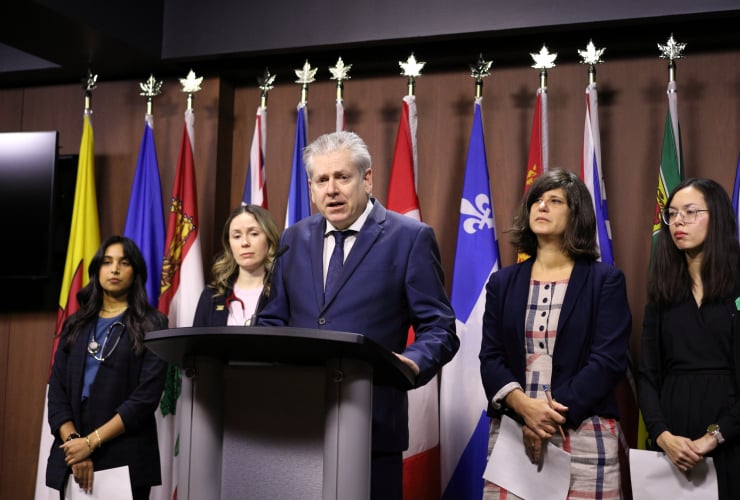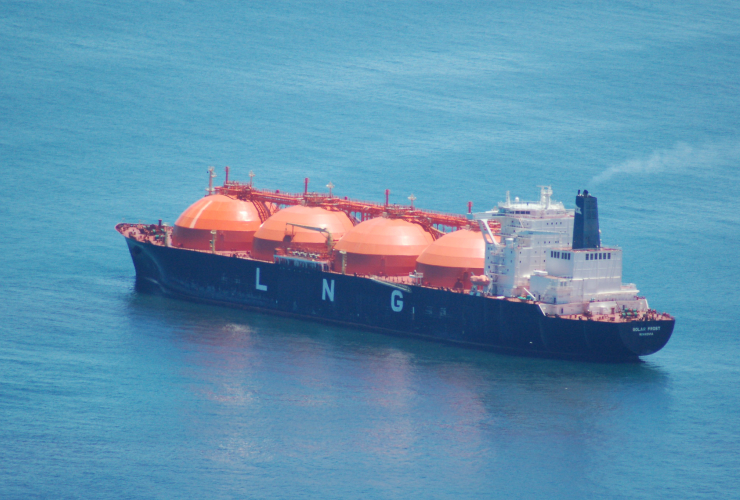The persistent lack of snow across much of B.C. is setting the stage for a possible repeat of the record-breaking provincewide drought experienced last summer, watershed experts worry.
Despite a short blast of arctic weather in January, unseasonably warm temperatures coupled with rain have been melting already stressed snowpacks, particularly in parts of southern B.C. and Vancouver Island, said Coree Tull, co-chair of the BC Watershed Security Coalition.
“If you look at local ski hills, many are all closed,” Tull said.
“From my front window, I can see the North Shore Mountains and Grouse Mountain right in front of me and the main run is completely bare.”
This year, drought concerns are surfacing even earlier than last, Tull said, noting snowpacks act as natural reservoirs, providing water to communities, farmers and watersheds as they melt in warmer, drier summer months.
As of the start of February, there have been only incremental improvements to snow levels at provincial measuring stations since Jan. 1 when snowpacks across the province were 56 per cent of normal, the BC River Forecast Centre’s first snow bulletin showed.
The next official bulletin is due Thursday, but even if the more detailed report shows marginal improvements in certain regions, the most affected areas will still likely face snow deficits significantly lower than those at this time last year, Tull noted.
Snow in the Vancouver Island basin, as well as the South Coast, Western Upper Fraser River, the Lower Fraser and Similkameen basins are areas of particular concern.
On average, approximately two-thirds of the total seasonal snowpack has accumulated by Feb. 1, according to the provincial forecast centre.
“Of course, we still have a few months of winter left,” Tull said.
“But the unprecedented unpredictable weather we've seen continues to contribute to really this persistent risk of severe drought.”
And the northeast region of the province, which has experienced little precipitation this winter, is still caught up in the serious drought from last summer.
“It’s fair to assume communities still in Stage 4 or 5 droughts are starting the new year at a deficit when it comes to the water reserves they need to get them through summer,” Tull said.
If snow and rain prove scarce again across B.C. as summer approaches, there’s increased danger of suffering last year’s impacts, including a brutal wildfire season, threats to drinking water in some communities, taps being turned off for hay and feed farmers, hits to salmon survival as streams shrink and businesses undermined by water use restrictions, she added.

As B.C.’s ongoing vulnerability to drought climbs, the province needs to start taking action sooner rather than later, said Aaron Hill, executive director of Watershed Watch Salmon Society.
“Last year, we didn't really see strong action until we were in the depths of the crisis,” Hill said.
While all of B.C. suffered drought last summer, it was the third year in a row that Vancouver Island suffered extreme drought.
To safeguard water for people, fish, livestock and growing food on central Vancouver Island, the province mandated temporary water restrictions in the Tsolum and Koksilah and Cowichan river systems.
Industrial water users and farmers growing water-intensive forage crops had to shut off their taps. Hundreds of water licence holders in the Thompson Okanagan region faced similar measures.
Postponing planning and action until water shortages are acute is stressful on fish, other wildlife and people in affected communities, Hill stressed.
“There's a lot of planning ahead that can be done to mitigate some of the worst impacts.”
There’s an urgent need for long-term, adequate and stable funding for drought prevention projects by communities and First Nations, particularly in vulnerable watersheds, including conservation programs to reduce industrial and household water use, he said.
Working with water users like farmers or businesses in areas likely to be hit by drought early lets them have water storage solutions in place ahead of time.
There’s also the need for the province to improve water monitoring, conduct watershed assessments and make water use reporting by large-scale industrial users mandatory, he added.
The province doesn’t have a clear idea of how many users are drawing water or even how much, Hill said.
Commercial groundwater users had a deadline to register for licences by March 2022. But even by last summer, many had not, prompting government orders to some water users in drought-stricken areas to turn off the taps.
Although large-scale industrial users estimate how much water they will draw with a licence, it’s largely an honour system because they aren’t required to report how much they actually use, Tull said.
“On top of that, industry is also paying almost nothing for the water that they do take from the system and that really needs to change,” she said.
Raising water rates ensure industry is paying its fair share for an increasingly scarce commodity. The funds raised can be reinvested into watershed projects and communities’ water security, she added.
Prioritizing the preservation of natural solutions like mature forests, wetlands and beaver dams that store or retain water on the landscape and reduce the risk of wildfires, drought and floods is also key, Hill said.
The province invested $100 million in a watershed security fund last March and is developing a watershed security strategy with First Nations that is expected to be released sometime this spring.
The province has also crafted new regulations that allow it to fine those who violate the Water Sustainability Act up to $100,000 for a general offence and up to $500,000 for serious penalties.
These are welcome steps, said Tull.
However, the scale of investment needed to address drought and watershed security concerns across the province will also require significant contributions from the federal government and private sector, she said.
Growing the security fund to $1 billion would allow $100 million to be invested annually to create and support promised local watershed boards, restoration work and fund water sustainability plans with locally designed solutions that reduce conflict over scarce water supplies.
The current amount of watershed funding will likely only allow for $5 million to be spent annually, which isn’t enough to address the complex and widespread responses urgently, Hill added.
“That funding doesn’t go very far to really ensure communities are able to plan infrastructure projects that are going to make them less vulnerable to drought and flooding.”
Rochelle Baker / Local Journalism Initiative / Canada’s National Observer
"To safeguard water for
"To safeguard water for people, fish, livestock and growing food on central Vancouver Island" and for that matter throughout BC we need to shift forestry from extraction of timber to protection and restoration of forests. This means an end to clearcuts and tree plantations, and replacing them with the protection of intact natural forests.
I believe there is a way
I believe there is a way forward without removing a vital building supply material for housing, which will necessitate plantations. Building sustainable housing means using mass timber and adopting Passive House standards in design and energy conservation.
It's possible to manage a working forest by using forest ecology principles to ensure mixed compatible species are planted, leaving stands of pioneer nutrient species like alder to stabilize areas previously damaged by clearcutting and to build up the soil, to utilize principles that protect and enhance the health of soils and build biome communities (e.g. beneficial fungi), practice extremely minimal soil disturbance when selectively thinning, and maintaining a solid continuous canopy cover as much as possible.
It goes without saying that ecologically managed forests will first and foremost ban cutting old growth everywhere, protect forever key watersheds and ecologically and culturally sensitive areas, and expand the riparian setbacks to streams beyond anything practiced today.
The loss of snowpack and
The loss of snowpack and glacial mass from climate change means BC Hydro is also threatened as hydroelectricity generation decreases. Moving into renewables is key, specifically wind, solar and geothermal. There is a reluctance to enter into long term contracts similar to the independent power producers using run-of-river techniques. Letting private operators have the right to alter public waterways is not a way forward.
Hydro could build renewable projects like onshore and offshore wind on its own on public land and waterways. It could also enter into mutually beneficial relationships with First Nations by purchasing wind and solar power from them. Ditto farmers.
With a tweak of its existing net metering policy, there is also great potential for Hydro to credit or purchase hundreds of MW generated from rooftop solar across the province. The beauty for Hydro is that third parties are funding the capital costs. If Hydro claims that transmission infrastructure isn't up to grade, then producers can point out that transmission will have to be upgraded sometime anyway to meet demand. Hydro could offer a 90% credit for every kWh produced, keep the 10% for transmission improvements and not deal with directly with funding new generation capacity on several hundred thousand roofs.
Solar panels and wind turbines have been getting better and better very quickly, and now excellent, affordable good quality storage batteries at the home and grid scale are entering the industry. Game changing tech all around is disruptive to the status quo, but has very powerful benefits in multiple directions.
As the move to renewables
As the move to renewables intensifies, the demand for hydroelectricity will be offset by demand for wind, solar and geothermal. The life of hydro reservoirs will no doubt be extended proportionately.
Metro Vancouver's water supply did experience a moderate crises before restrictions were enacted in the 90s. Before that, 40% of the city's expensive drinking water supply was drawn down merely to keep suburban lawns green when grass typically goes dormant. Restrictions really helped, and now we've see carwashes that use recycled water and sales of drip irrigation soar.
The Metro's water supply is drawn from three large mountain watersheds. It seems there is enough surplus storage capacity and future dam heightening capability to ensure adequate supplies for a growing urban population, with restrictions and universal metering to impose control over consumption. Still, lawn watering consumes about 20% of the potable water supply today.
This is now a good time for cities, regional governments and the province to look at rainwater harvesting. Probably 100,000+ litres of rain rolls off my roof every winter here in Vancouver, and ends up in the storm and combined storm-sanitary sewer system that runs through treatment plants and then into the sea. Rain is a magnificent resource that should be tapped to offset the use of precious potable water. New houses could be mandated to have 3,000-5,000 litre underground cisterns buried under the back patio for garden irrigation in summer. Thinking bigger, cisterns storing tens of millions of grey water from streets and roof downspouts could be buried in parks and used for fire fighting, street cleaning and park planting bed irrigation.
Rain water harvesting is a cottage industry that in many cases displaces rural well water for drinking. It's big in Australia and has gained lots of traction in BC's summer-parched Gulf Islands. Filtration and UV light disinfection are pretty common in these systems.
Snow and ice are increasingly unreliable as water sources on the coast. But rare is the time winter rain on the coast falls short. In fact it is in great excess and some of it could be exported to the parched Prairies in future ... a new use for TMX!






Comments